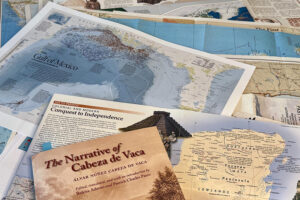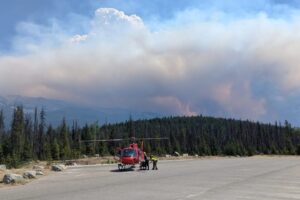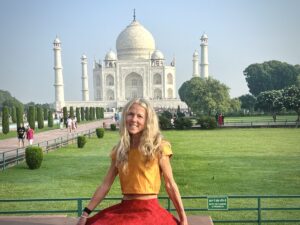During Stalin’s reign in the former Soviet Union, millions of civilians were imprisoned under brutal conditions in the gulags, a supremely euphemistic term meaning Main Camp Administration. They sometimes worked 14 hours a day in freezing weather, wearing little more than canvas shoes and thin clothing. Sometimes, just three weeks is all it took for a prisoner to succumb.
Needing abundant free labor to build his industrial empire, Stalin incarcerated millions of his people for crimes as minor as reading literature or for speaking favorably of rival political leaders. When Stalin died in 1953, gulags began to fade out, but minority cultures expelled to the hinterlands during his regime continue to live peacefully in the world’s coldest inhabited place.
In 2004, Swedish explorers Mikael Strandberg and Johan Ivarsson traveled 3,000km by ski and canoe through the Siberian winter. Often, temperatures plummeted below -73°F (-58°C).

A frosty morning, even for Siberia.
Sleeping in a thin mountain tent, the travelers glimpsed some of the stress that Stalin’s prisoners faced, despite their considerably warmer clothing. Barely able to sleep, they shivered relentlessly.
When they first met people after two months on the trail, they began to understand what kind of person is shaped under the harshest conditions imaginable. Withstanding cold, they learn, is about mental tolerance and the ability to adapt. Even wearing gloves, they are told, is considered a sign of weakness here. “I’ve been cold all my life,” one man tells them. “I’m used to it.”

Mikael Strandberg and Johan Ivarsson pull 100kg sleds through the Siberian winter.
Andre, the first person they encounter, recounts how his father was sent to one of Stalin’s camps and executed the day of Andre’s birth. Andre has lived his entire life along the Kolyma River, yielding a modest income trapping muskrats.
Muskrats were first introduced to Siberia from Canada in the 1800s. Its fur is commonly used for coats, linings, hats and vests. One coat requires around 50 muskrats. But the rising cost of fuel to snowmobile along his trapline makes it increasingly difficult for people like Andre to make a living. Nevertheless, muskrat trapping is one of the few ways to earn money in his region.

Surviving the cold is more about attitude than ability.
As the pair approach their final destination, Zyryanka, having witnessed small groups of transplanted people clutching onto the remains of their fading cultures, Strandberg and Ivansson notice how many evade despair by a seemingly almost out-of-place zest for life.
Zyryanka, population 3,000, was once a gulag and has since fallen prey to broken political promises of investment. Most residents are jobless, hunting and fishing for survival. The lone factory in town produces the two staples of life in the Russian wilderness, bread and vodka.
During their six-week stay in Zyryanka, Strandberg and Ivansson spend evenings with locals, who share stories similar to Andre’s. Only now are these descendants of zeks, or prisoners, beginning to feel safe enough to share their family’s grim pasts.
Strandberg and Ivansson’s journey fell into three stages. First, they followed the Kolyma River, then they walked 2,400km for up to 16 hours a day. At Zyryanka, they holed up for six weeks for safety during the worst of the winter.
Traveling by desolate communities and past tangles of the barbed-wire remains of prison camps, they make a profound discovery: Regardless of what has shaped a person or community, be it horrifying or privileged, “people are fundamentally good”, and attitude can overcome cold and adversity.






